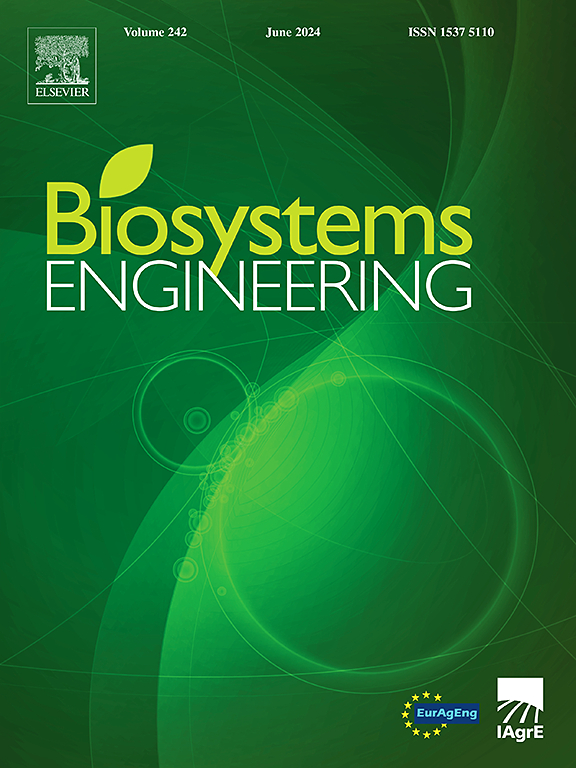Development of a spectral repository for the identification of western Himalayan medicinal plants using machine learning techniques
IF 4.4
1区 农林科学
Q1 AGRICULTURAL ENGINEERING
引用次数: 0
Abstract
The identification of medicinal plant species is a crucial task for assessing the status of our bioresources. Conventional methods primarily rely on taxonomy and laboratory-based instruments, which are time-consuming and require the requisite expertise. Thus, there is an escalating demand for efficient techniques that can quickly identify these precious species. The advent of Hyperspectral Remote Sensing (HRS) with artificial intelligence has significantly increased the scope of HRS techniques by offering rapid and precise plant identification. This study utilised non-imaging HRS handheld sensors to build a spectral repository for 10 important medicinal plant species from diverse locations across Indian Himalayan states, representing varying altitudinal and ecological conditions. The spectral repository encompasses 1237 distinct spectral signatures obtained from the leaves and canopies of the targeted plant species. Subsequently, an identification model has been developed using Random Forest (RF) with several feature selection methods, and it has been revealed that the RF model, coupled with wrapper-based feature selection, is an effective combination for classifying the targeted plant species. The calibration and test datasets accounted for accuracies of 87.87% and 91.39%, respectively, with corresponding kappa coefficients of 0.85 and 0.89. Furthermore, the developed RF model was applied to ‘PRISMA’ satellite data to identify Saussurea costus crops in farmers' croplands, achieving a classification accuracy of 81.31% and a kappa coefficient of 0.76. Therefore, the study highlights the potential of integrating RF, in-situ HRS, and satellite HRS for the non-destructive, precise, and accurate identification of medicinal plants that can significantly contribute to biodiversity conservation and sustainable resource management.

利用机器学习技术开发喜马拉雅西部药用植物的光谱库
药用植物物种鉴定是评估我国生物资源状况的一项重要任务。传统方法主要依靠分类学和实验室仪器,这既费时又需要必要的专业知识。因此,对能够快速识别这些珍贵物种的有效技术的需求不断增加。人工智能高光谱遥感(HRS)技术的出现,通过提供快速、精确的植物识别,大大增加了高光谱遥感技术的应用范围。本研究利用非成像HRS手持式传感器,建立了来自印度喜马拉雅邦不同地点的10种重要药用植物的光谱库,这些植物代表了不同的海拔和生态条件。光谱库包含从目标植物物种的叶子和冠层获得的1237种不同的光谱特征。随后,将随机森林(Random Forest, RF)模型与多种特征选择方法相结合,建立了一种识别模型,结果表明,随机森林模型与基于包装的特征选择相结合,是一种有效的植物物种分类方法。校正数据集和试验数据集的准确率分别为87.87%和91.39%,kappa系数分别为0.85和0.89。将所建立的RF模型应用于“PRISMA”卫星数据,对农民农田中的木茸作物进行了分类,分类精度为81.31%,kappa系数为0.76。因此,该研究强调了将RF、原位HRS和卫星HRS结合起来进行药用植物无损、精确和准确鉴定的潜力,可以为生物多样性保护和资源可持续管理做出重要贡献。
本文章由计算机程序翻译,如有差异,请以英文原文为准。
求助全文
约1分钟内获得全文
求助全文
来源期刊

Biosystems Engineering
农林科学-农业工程
CiteScore
10.60
自引率
7.80%
发文量
239
审稿时长
53 days
期刊介绍:
Biosystems Engineering publishes research in engineering and the physical sciences that represent advances in understanding or modelling of the performance of biological systems for sustainable developments in land use and the environment, agriculture and amenity, bioproduction processes and the food chain. The subject matter of the journal reflects the wide range and interdisciplinary nature of research in engineering for biological systems.
 求助内容:
求助内容: 应助结果提醒方式:
应助结果提醒方式:


